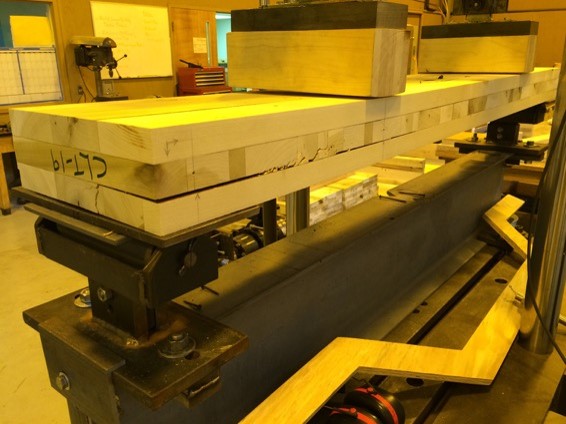
Shear Analogy Model (Hybrid Layup) – UPDATED 2023
Analytical Tool
- SAM-CLT: SAM-CLT tool is an Excel-based analytical tool designed to evaluate the mechanical performance of the CLTs using the design value of lumber published in NDS, where the user chooses or defines the lumber species and grade to be used in the major and minor direction of the layups.
This tool can be accessed here Sustainable Innovation Management – Making Innovation Successful (vt.edu)
Yellow poplar producer and distributor list
Presentations
- Adhikari, S., Bond, B., Quesada, H., 2021. Can we Increase the Durability of CLTs by Introducing Hardwood Lumber? Oral presentation. 118th AWPA Annual Conference. May 15-17, 2022. Charleston, South Carolina. (Conference presentation)
- Adhikari, S. Production of structural grade hardwood lumber for CLT use. Oral presentation. AHMI 2021 Fall Conference. October 12-14, 2021. White Sulphur Springs, WV. (Conference presentation)
- Adhikari, S. Manufacturing and Preparation of Hardwood Lumber for CLT use. Oral presentation. AHMI 2021 Summer Conference. August 1-4, 2021. White Sulphur Springs, WV. (Conference presentation)
- Opportunity for Mass Timber in Virginia. Brian H. Bond. Virginia Forestry Summit. September 28-October1. Harrisonburg, VA
- Creating a Market for Hardwood. The latest research and development of cross-laminated timber (CLT), how supply chain issues impact the CLT mass timber industry, and how new market opportunities impact Virginia’s economy. Paul Winistorfer, Brian Bond, Emily Moore, Don Bright, and Ken Morgan. Virginia Forestry Summit. May 3-May 5, 2022. Blacksburg, VA.
- Advancements in Hardwood CLT. Henry Quesada, Brian Bond, Tom Inmann, Brant Cobb, David Venables. September 2022 Annual Convention and Exhibit Showcase. National Hardwood Lumber Association.https://www.youtube.com/watch?v=-KrjAWTTF-s
Grants
- A Path Towards Cost-Effective Production of Hardwood CLT. Dan Hindman, Joe Loferski, Brian Bond, Levente Denes, and Joe McNeel: $213,985. USDA. Wood Innovations. 2022-2024.
Short courses/Seminars
- Wood in Construction and Beyond: Highlights on Mass Timber Products Seminar. The Virginia Department of Forestry, in partnership with the Department of Sustainable Biomaterials and Virginia Cooperative Extension. A tour and a talk about the newly built Apex Energy Mass Timber building in Charlottesville were included. July 27, 2022.
- Hardwood Structural Lumber Grading Workshop. October 12, 2022. Mountain Gateway Community College. Clifton Forge, VA. Virginia Tech, in partnership with the Appalachian Hardwood Manufacturers, Inc.
Publication
- Adhikari, S., Quesada, H., Bond, B., & Hammett, T. (2020). Potential of Hardwood Lumber in Cross Laminated Timber in North America: A CLT Manufacturer’s Perspective. Mass Timber Construction Journal, 3(1), 1-9. Retrieved from https://www.journalmtc.com/index.php/mtcj/article/view/20
- Adhikari, S., Quesada, H., Bond, B., & Hammett, T. (2021). Current Status of Hardwood Sawmills to Produce Structural Grade Hardwood Lumber. Mass Timber Construction Journal, 4(1), 10-18. Retrieved from https://www.journalmtc.com/index.php/mtcj/article/view/mtcj_issue1_volume4_2021


